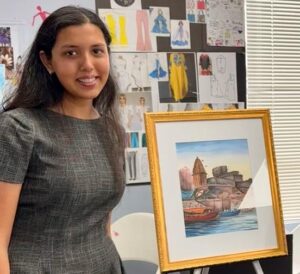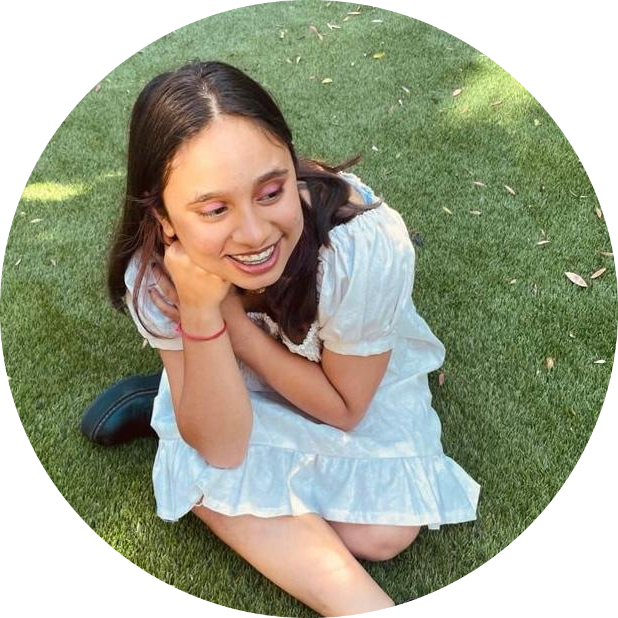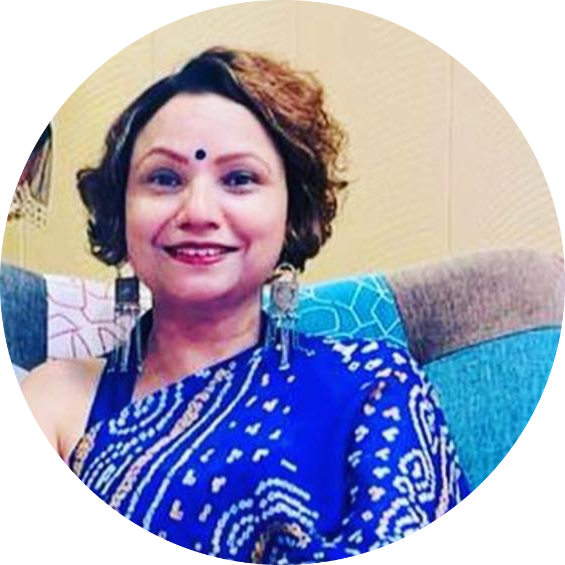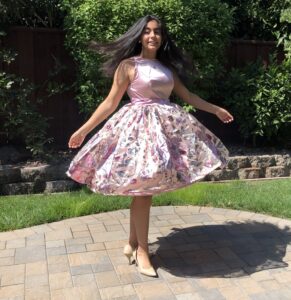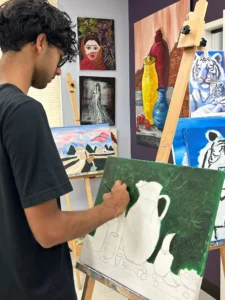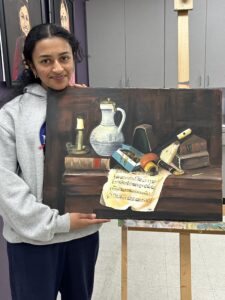Village Scene, Warli Art
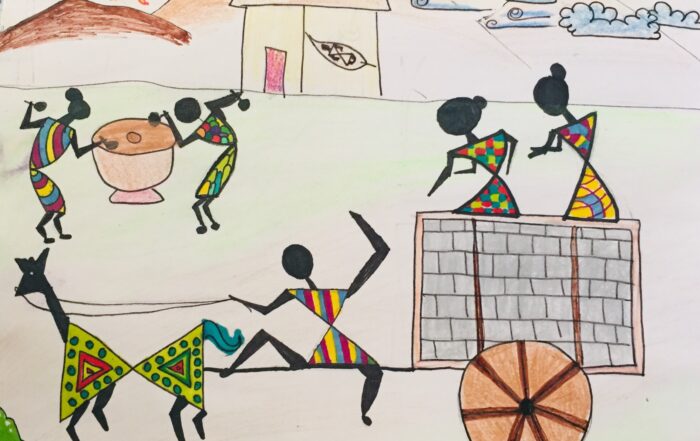
By, Minali Kancharla, Grade 7th The word Warli means a piece of land in the Varli language. Warli is a folk painting style native to India that mostly represents traditional everyday living and special events. The Warli style uses geometrical designs to make the main body of the subjects, this is for humans and animals. Warli painting uses basic shapes such as circles, triangles, and squares. The first step to this art is to sketch out your village scene using a set of basic shapes and make geometric patterns on the dresses. The page was then washed with tonal watercolor, to give a vintage effect. After the water wash on the page dries up, I outlined the sketch with a black point pen. The color scheme chosen for this artwork was Split complimentary, for this I chose two sets of split complementary colors. For each animal or human, use one set of complementary colors to fill the designs inside the subject. The end result is a colorful piece of art made from basic geometric shapes and colors.
Chaos in Oneself
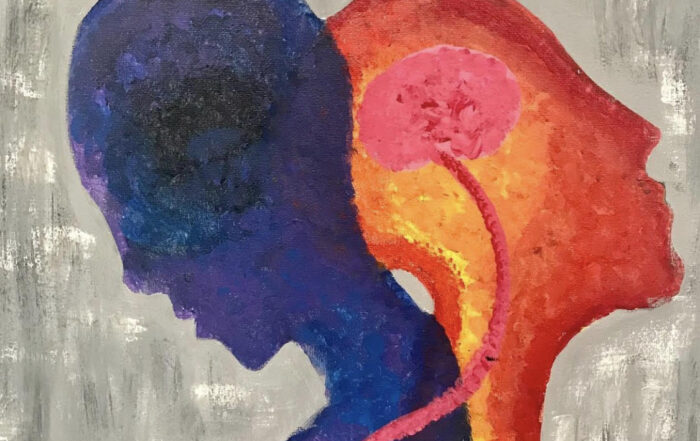
By- Saesha Sharda, Freshman, 2020 “Life doesn’t make any sense without interdependence. We need each other, and the sooner we learn that the better for us all.” — Erik Erikson In the present artwork, I have chosen to write focuses on the struggles of having bipolar disorder. Bipolar disorder is a mental illness characterized by extreme swings of high and low moods. The high mood is known as the manic phase, and the low mood is known as the depressive phase(“Bipolar Disorder: Symptoms, Causes, Diagnosis, Treatment.”). In my painting, I have shown two human-resembling figures balancing on each others’ backs, connected by the brain and heart. One figure is blue and has a heart painted on its chest. This figure represents the depressive phase, as blues and purples usually represent sad, somber moods. The other figure, which is yellow and has a brain painted in its head, represents the manic phase, as we normally pair the color yellow with high energy. The reason the heart and brain are shown is to represent their connection: Rational thinking (the brain) and Emotions (the heart). The figures are part of the same person, symbolizing how the two phases occur to the same person, affecting the same person, making it especially hard to get through daily life. The reason I wanted to create this painting was that I am passionate about raising awareness about not only bipolar disorder, but mental health issues in general. It is so important that we spread the word about mental illnesses and coping with them so that we can break the stigma that surrounds them. Stigma is a word to describe the social disapproval or discrimination against a person based on their characteristics, physical or mental. It is the fear of the stigma that keeps people suffering from mental health issues from coming forward about their struggles. In the Indian community especially, stigma against mental health issues is very apparent. The more we talk about it, the closer we are to helping someone cope with their mental illness and even saving lives. Submitting my painting to Vosap’s International Competition about disabilities was the perfect opportunity to share my art, and spread awareness about mental health issues. Work Cited: “Bipolar Disorder: Symptoms, Causes, Diagnosis, Treatment.” WebMD, WebMD, www.webmd.com/bipolar-disorder/mental-health-bipolar-disorder#:~:text=Bipolar%20disorder%2C%20also%20known%20as,sad%2C%20hopeless%2C%20and%20sluggish.
Periodt…! periods are not our weaknesses, but our strengths
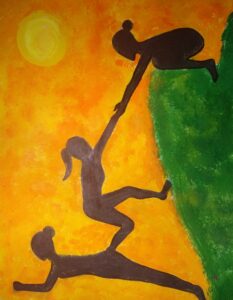
By -Saesha Sharda, Grade 9th When I was a little girl, I was not really encouraged to talk about menstruation, especially in front of my older family members and relatives. Not only was I confused about why periods occur, but also why I wasn’t allowed to talk about it. Now that I’m older and know about periods, I can comfortably talk about them with my parents whenever I have questions or concerns. Menstruation is a fascinating process that happens to almost every single woman on the planet, and I don’t understand why women get shunned for talking about it. Periods are not ‘gross’ or ‘weird’, they’re pretty cool. We need to empower women and encourage them to stand up and talk about light-hearted things like periods, to other heavier topics. My artwork on women empowerment ties into the concept of women helping women. In my artwork, I have shown three women helping each other climb a cliff through a fire. The cliff represents the normal hardships women have to go through, and the fire represents how the outside world makes it harder for women to achieve these tasks. I have used acrylic paint to show a silhouette of the women the background is with acrylic textures. It is important we address things like this through artforms for expressions, I feel it is a step in the right direction. Women are awesome! But, I do understand that the older generation was raised to not talk about women’s’ issues and menstruation, but it is time that changes. Our periods are not our weaknesses, but our strengths; and it’s pretty cool that we get to go through this cycle that perpetuates the entire human species!
Art for improving Hand Dexterity for Children
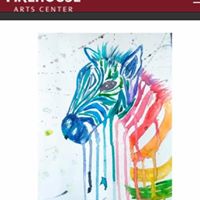
“The hands are the instruments of man’s intelligence”, – Maria Montessori. children’s dexterity is so important in their education and for their overall development. art has great role to play in this regard. Arts helps in refining hand dexterity help children develop their cognitive, social and motor abilities. Art plays major role in developing following areas: Cognitive abilities: Art teaches students that mistakes are alright and not end of the problems but can be redone. Art induces the mind to discover. It teaches young minds that any problem may have more than one solution. Art gives learning and the power to make their ideas come true through materials Social abilities: Teach them that they have to endure efforts. It nurtures the social skill that they should value the efforts of others. Art study works as therapies for children with difficulties. Creative processes are a way to create an integration in groups with various cultures. Motor skills: Fine motor skills are those that involve a refined use of the small muscles which control the hand, fingers, and thumb. Handling a pencil or brush correctly, using glue to stick, paper, feathers, glitter, and the like on a mask and drawing improve the children’s dexterity and their use of objects in a controlled way. It is an excellent way to develop eye-hand coordination. Any activities that include crafts or playing with loose parts will help kids develop hand dexterity. Every art lesson in Kalaa is created keeping the development of the child’s social, cognitive, emotional, and physical development in mind. The skills developed during the process of creating art will enable your child to meet with future success in school and life.
Pleasanton Landscape, My City My home
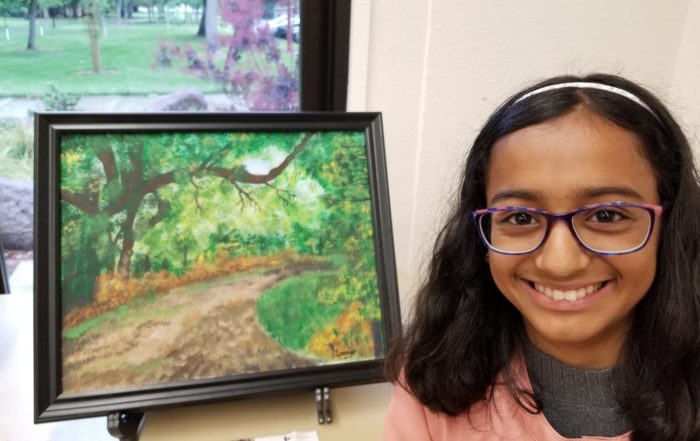
By Apoorva Kulshreshtha Pleasanton has many beauties. It has joyful downtown, the hiking trail called the Ridge, and a wonderful history. I painted a scene from the Ridge. It has trees and a trail. In my painting, there is a dusty pathway in the middle, trees in the distance and the front, some grass, and bushes of a variety of color. My painting included a bit of stipiling for the tree leaves, bushes, and the trail. My painting took a short amount of time. It was also my first painting I made in Kaala Art and Design. It was for the 2019 Kalaa Art and Design Exhibition. I like this painting because it has many different techniques in it and it has nature in Pleasanton. This painting is inspired by the artist, Vincent van Gogh. He was famous for post impressionists and the painting “The Starry Night”. Van Gogh died in 1890. I really like his artworks since the colors express how he is feeling in the painting and he makes landscape and people in his own style.
Traditional Art- Warli Painting
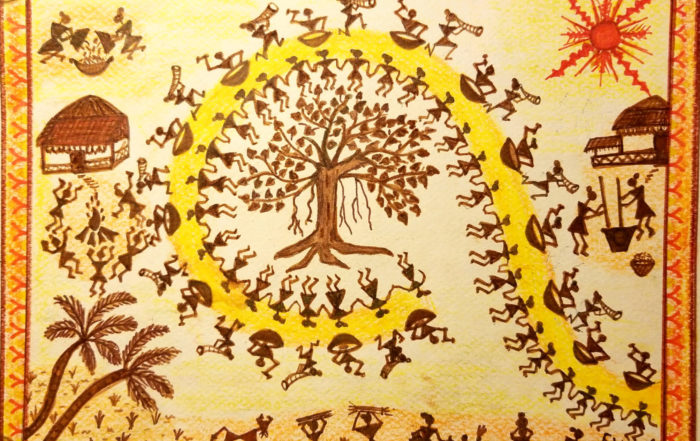
By Simi Tresa Originated by the Warli tribes from the Western Ghat of India, in 2500 BC, this one of the oldest art forms of India. The idea of warli centred around the concept of Mother Nature and parts of nature. Farming was the main source of life for this tribe. This art uses set of basic geometric shapes like circle, triangle, lines and square. These shapes were different elements of nature. Circles represented sun and moon while triangle represented mountains and pointed trees. In ritual paintings festivals and dances were common. People and animals represented by two inverse triangles joined at there tip. Warli also represent day to day life and activities of village people. One of the aspects that warli art depicts is the ‘Tarpa dance. Tarpa is a trumpet-like instruments played by village mens in turns. Men and women entwine there and hands and move in circle around the Tarpa player. Formation of circle by men and women in village said resemblance of circle of life.
Storytelling by Art Inspired by Madhubani Folk Art of India
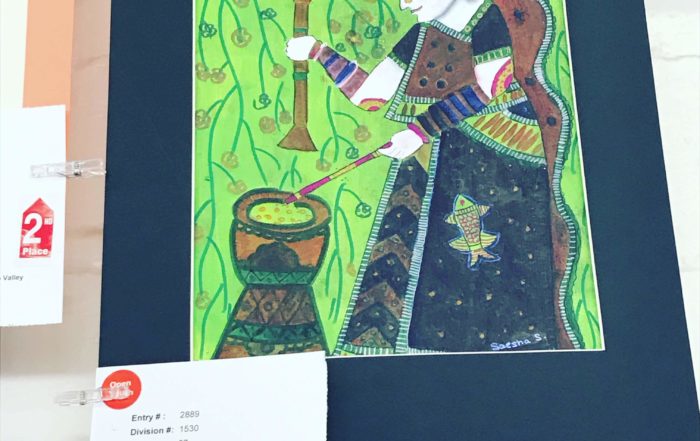
The beautiful thing about art is that it is universal. It has no language, no accent, and each piece of artwork tells a different story. Madhubani folk art is no exception as it is presented in a multitude of colors, mediums and most importantly, stories. Madhubani folk art originated in Bihar, India and is done by using fingers, twigs and matchsticks. They are known for figures that have large fish like eyes and pointed noses. There is never a blank space on the canvas and backgrounds are filled with colorful patterns. Furthermore, many geometric patterns in Madhubani art pieces represent love and bravery as well as prosperity. Madhubani pieces often depicts scenes from epics and also show different foods and animals. My Madhubani artwork is a recreation of a piece called “Village Woman” . In the artwork, a woman preparing food in a bowl like vessel. She is wearing a blue and red saari. The skirt of the saari has a drawing of a yellow fish on it. In addition, the woman is holding a two different sticks to prepare her meal. She wears jewelry such as earrings and bangles. The background of the piece is filled with green leaves and red flowers. The artwork is very colorful and lively and contains many patterns. I personally chose to recreate this artwork because I loved the bright color scheme and the designs were hard to miss. It was really fun to make the artwork. It was sort of therapeutic in a way because I was enjoying the drawing process and all of my stresses were cleared away. Madhubani folk art is a wonderful type of art. There are many artists creating beautiful Madhubani art pieces all around the world. Artworks capture scenes from different stories and contains so much meaning. The 2500 year old folk art still remains strong and will be respected for many, many years.Author: Saesha Sharda
Art has the role in education of helping children become like themselves
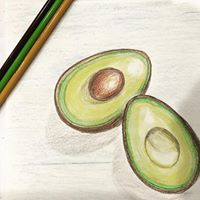
10 of the many skills children learn from art: 1. Creativity 2.Confidence 3.Problem-solving 4.Perseverance 5. Focus 6. Non-verbal communication 7. Receiving constructive feedback 8. Collaboration 9. Dedication 10. Accountability Arts education is a big part of building a 21st century creative mind, and I think that we have let way too many kids lose their way by not drawing in their young minds with music, dance, painting and the other various ways we can express those things we do not have words for. By Heather Watts Every time you engage in a new or complex activity, your brain creates new connections between brain cells. Your brain’s ability to grow connections and change throughout your lifetime is called brain plasticity or neuro-plasticity. Creating art stimulates communication between various parts of the brain. Art has the role in education of helping children become like themselves instead of more like everyone else. Decades of research have provided more than a sufficient amount of data to prove that arts education impacts everything from overall academic achievement to social and emotional development and so much more. Research has proven the arts develop neural systems that produce a broad spectrum of benefits ranging from fine motor skills to creativity and improved emotional balance Kala Art & Design studio, mission is in developing unique artistic voice, unlocking freedom of self-expression, and a light hearted but deeply meaningful approach of learning art and design. #kalaartanddesign, #art, #Design, #creativeminds, #littlehands #tinyfingerscreatingmagic
A Child’s Mind is not a Container
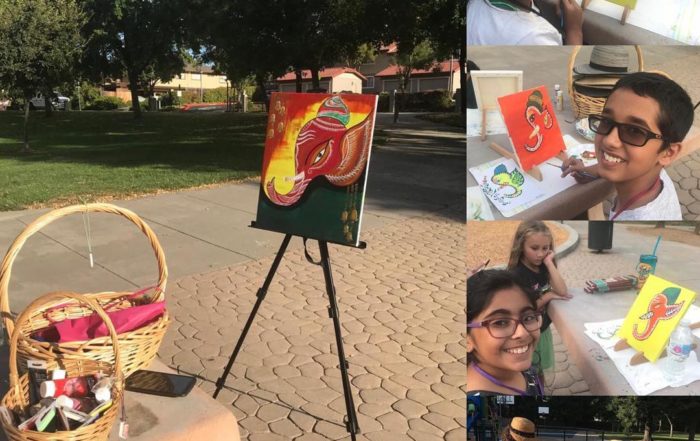
And just when this 10 year old said, I am not sure if I can paint!! she made her first wall painting which might look amateur to her as she travels more in this path, but sure would never be forgotten as it’s the first and it’s the prettiest and most importantly it is truly hers! 10 of the many skills children learn from art: 1. Creativity 2.Confidence 3.Problem-solving 4.Perseverance 5. Focus 6. Non-verbal communication 7. Receiving constructive feedback 8. Collaboration 9. Dedication 10. Accountability Arts education is a big part of building a 21st century creative mind, and I think that we have let way too many kids lose their way by not drawing in their young minds with music, dance, painting and the other various ways we can express those things we do not have words for. By Heather Watts Art has the role in education of helping children become like themselves instead of more like everyone else. Every time you engage in a new or complex activity, your brain creates new connections between brain cells. Your brain’s ability to grow connections and change throughout your lifetime is called brain plasticity or neuroplasticity. Creating art stimulates communication between various parts of the brain. Kala Art & Design studio, mission is in developing unique artistic voice, unlocking freedom of self-expression, and a light hearted but deeply meaningful approach of learning art and design. #kalaartanddesign, #art, #Design, #creativeminds, #littlehands #tinyfingerscreatingmagic
Healing Power of Art- Kalaa Art & Design
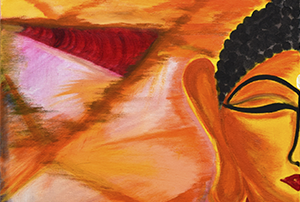
Healing power of artKala Art & Design “The arts are a critical component of healthcare. Expressive art is a tool to explore, develop and practice creativity as a means to wellness.” ~ Wellarts Association ART has the power to heal, offer hope. ART enhances individuals, society and the environment. Decades of research have provided more than a sufficient amount of data to prove that arts education impacts everything from overall academic achievement to social and emotional development and so much more. Research has proven the arts develop neural systems that produce a broad from fine motor skills to creativity and improved emotional balance. Every time you engage in a new or complex activity, your brain creates new connections between brain cells. Your brain’s ability to grow connections and change throughout your lifetime is called brain plasticity or neuroplasticity. Creating art stimulates communication between various parts of the brain. And this is the mere reason why art is important in our daily lives. Art and design process makes life worthwhile. It may not be vital to fulfill our basic needs; it does make life joyful.

